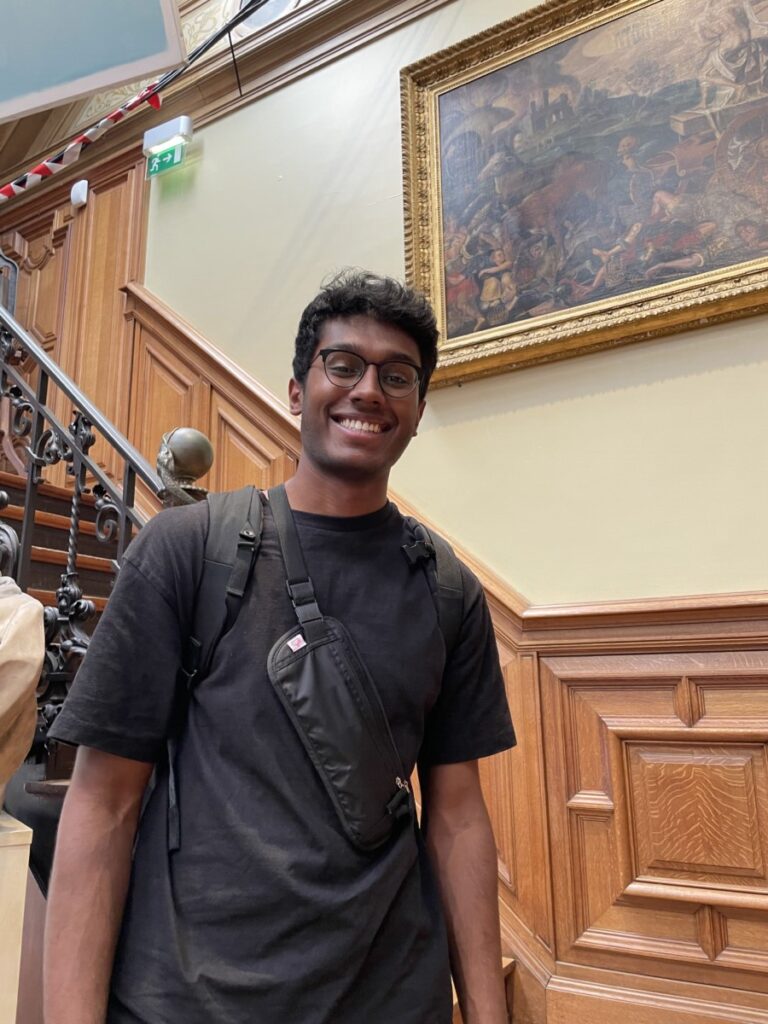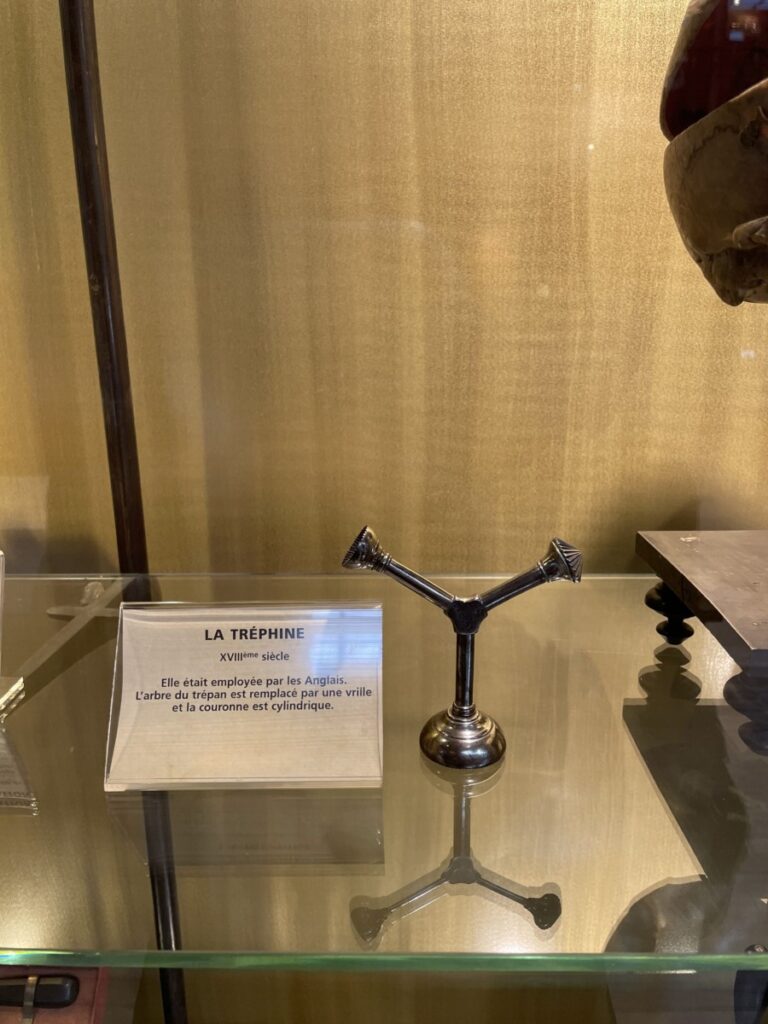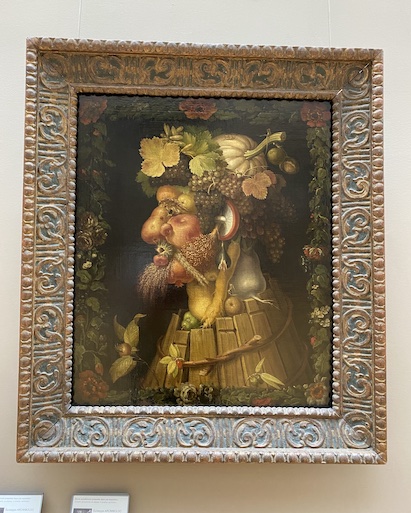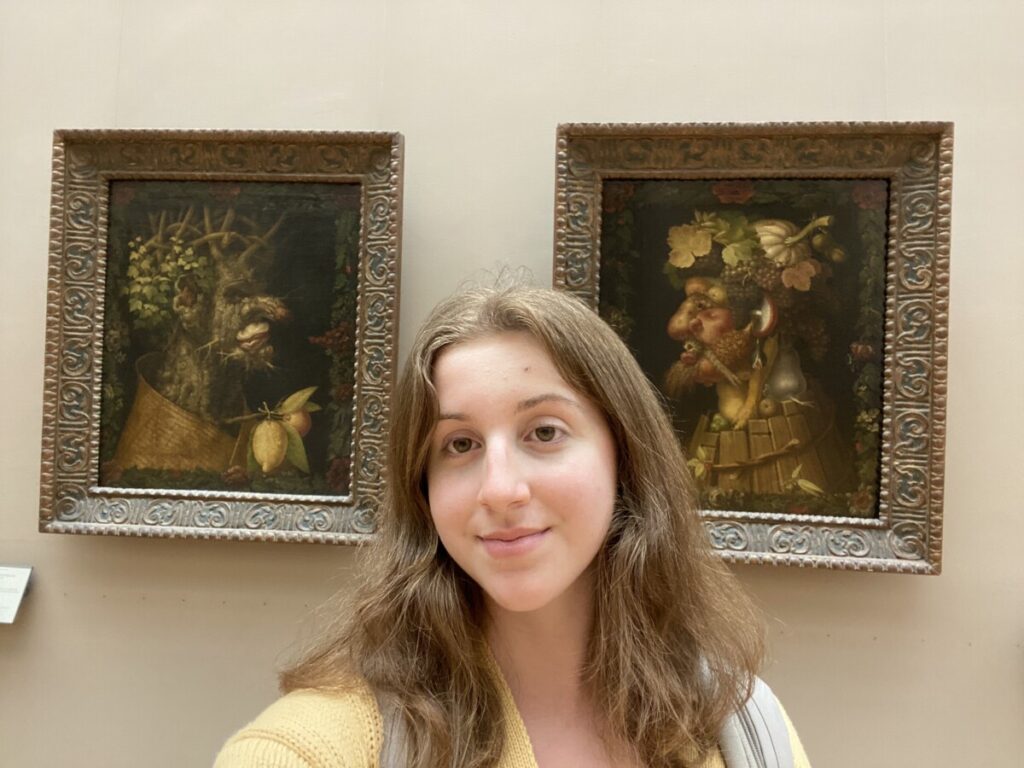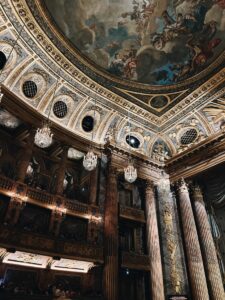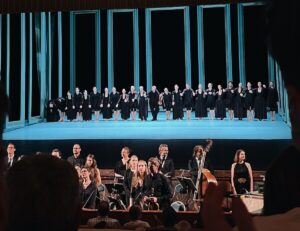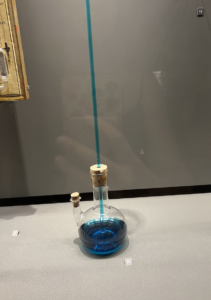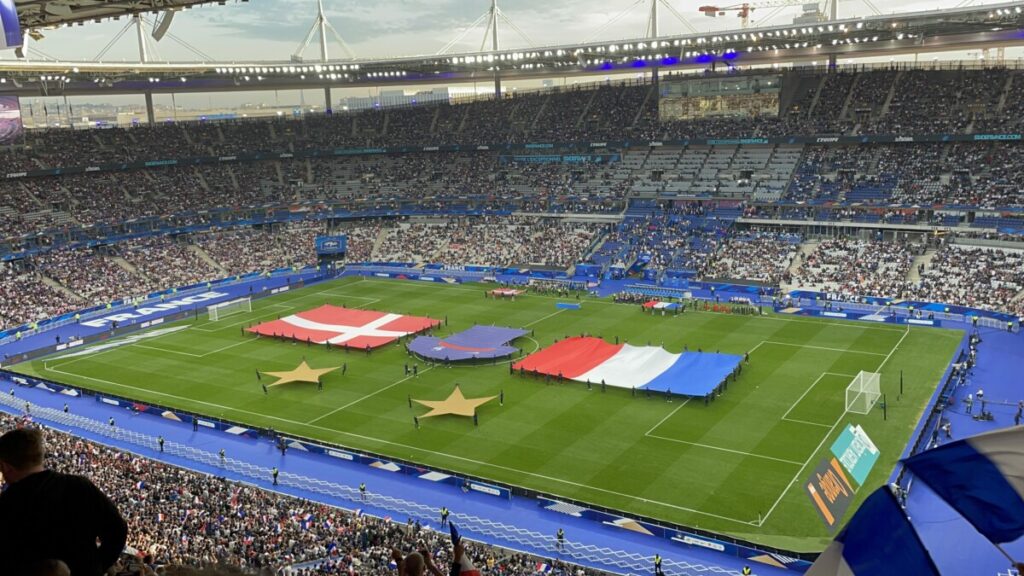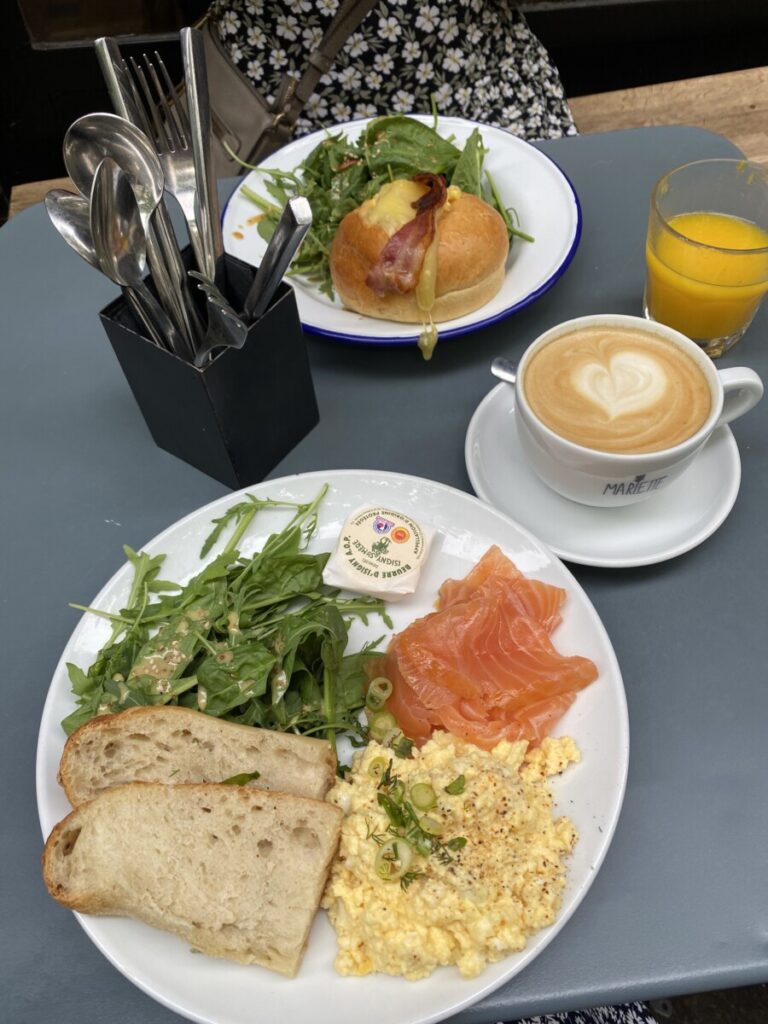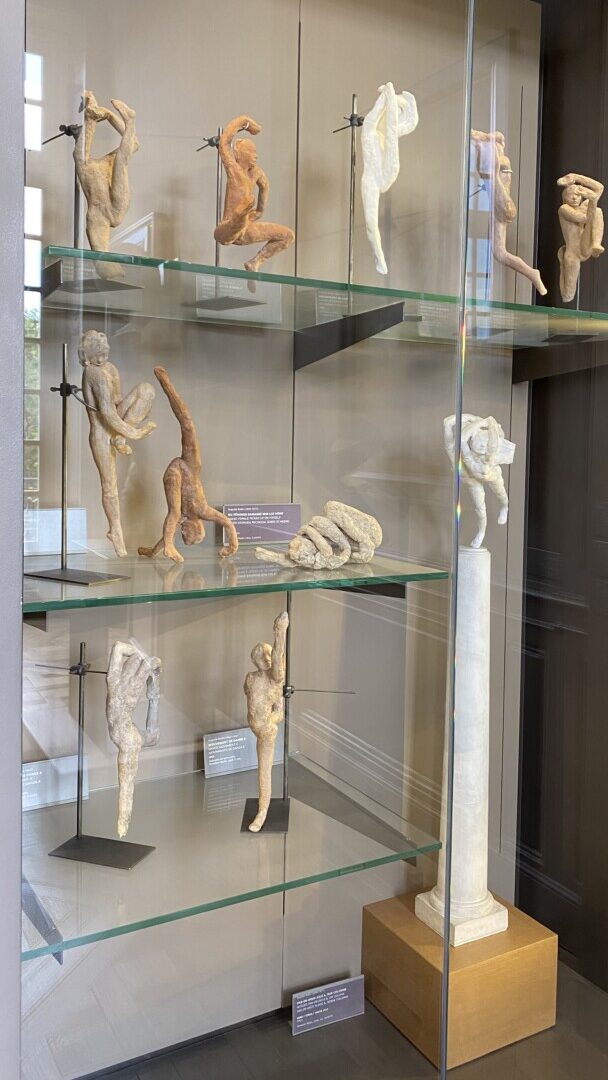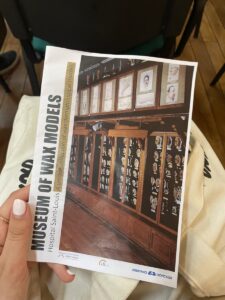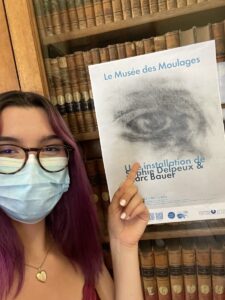Today we ventured to the Musée de Moulages for the second time. Although it was an optional excursion, I was excited to go and see the different skin disease and conditions. Traveling to the museum allowed us to walk through a new arrondissement of Paris and see a beautiful canal. Held within hospital grounds, we saw patients enjoying the outdoors and doctors taking a break or walking to a neighboring building in the hospital.

Upon entering the museum, we saw drawings and paintings of patients with different skin conditions. In the entryway, there was a sculpture of Louis IX, the ancestor of Henry IV. Upstairs housed the real exhibit: over 4,800 castings of all types of dermatological problems, from syphilitic chancres to eczema to elephantiasis. Jules Baretta is the one who first started making the wax dermatological models after his great success with his realistic models of fruit. Despite these fascinating displays, we were strictly prohibited from taking photos, as they came from moldings of real patients, so the museum is protecting their privacy. I think it is important that the museum values the privacy of the patients so strongly, even though the patients are most likely dead.
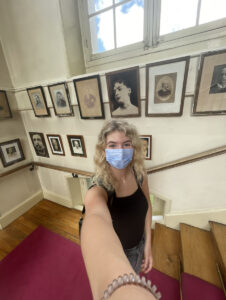
I was most fascinated by the syphilis exhibition, one of their largest displays with 442 wax models. In class, we learned about neurosyphilis and ocular syphilis and their corresponding symptoms. As I was a part of the group who presented on this target article, I had the pleasure of finding Google Images of these symptoms, such as the chancres. I realized that Google Images only displayed the mild versions of the symptoms. The extent to which syphilis can affect the body is truly horrifying, most of which I don’t think I’ll be able to unsee. I think modern medicine has come a long way since the creation of some of these castings. Doctors can detect syphilis sooner and treat it easily with penicillin, so the symptoms are not as severe.
It is important that these skin diseases are still understood and studied, even though we use photographs instead of wax models, because there has been a rise of syphilis in the past two decades, specifically in women and congenital syphilis. The museum displayed the presence of congenital syphilis in babies, and it was very unfortunate. Testing for neurosyphilis can still be difficult, but doctors normally rely on the CSF Venereal Disease Research Laboratory with a higher titer cutoff to diagnose neurosyphilis (Chow, 2021). Without modern medicine and antibiotics, a lot more people would die from syphilis and neurosyphilis.
Chow F. (2021). Neurosyphilis. Continuum (Minneapolis, Minn.), 27(4), 1018–1039. https://doi.org/10.1212/CON.0000000000000982

